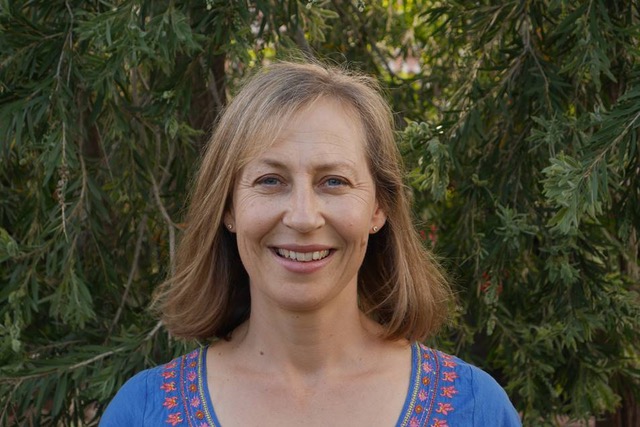 This important statement from the Public Health Association of Australia came out in November last year but has been overlooked. It should be emphasised that the Public Health Association does not make press releases like this lightly. The entire document can be downloaded here.
This important statement from the Public Health Association of Australia came out in November last year but has been overlooked. It should be emphasised that the Public Health Association does not make press releases like this lightly. The entire document can be downloaded here.
Time for leadership on Australia’s population growth
The Public Health Association of Australia (PHAA) is calling on Federal and State Governments to develop sustainable population policies to curb the associated population health and environmental risks.
“Australia’s population is projected to grow from the current 22 million to 35 million people by 2049 unless urgent action is taken now. Given the dramatic impacts that population growth has on health and environmental sustainability, it is hard to believe that Australia still has no population policy -- it is well past time to develop one,” according to Michael Moore the CEO of the PHAA.
More population will dramatically impact on food security, housing, mental health ...
PHAA spokesperson Dr Peter Howat of the PHAA said: “The projected 60% increase in the population in just 40 years will have a dramatic impact across many areas of service provision including hospitals and other health care services. The impact will extend to food security, nutrition, affordable housing, transport, education, stress and depression with the changing demography of Australia’s population”.
More population will negate any reduction of Australia's carbon footprint
Importantly, this rate of population growth would also effectively negate any achievements in reducing Australia’s carbon footprint. Yesterday the United Nations released its State of the World Population 2009 identifying population growth projections between 8 billion and 10.5 billion people by 2050. The report also identified ‘the key point is that women and men themselves, not Governments or any other institutions, make decisions on childbearing that contribute to an environmentally sustainable human population’.
PHAA spokesperson Dr Liz Hanna added:
“Population growth of this scale will magnify environmental impacts including climate change, drought, and soil degradation and will dilute all the health benefits of migration, including access to education, health care and employment. On the other hand, stabilising population growth would have many benefits for both health and environment.”
Policy to curb overpopulation risks now critical
Dr Howat noted that: “It is now critical that all our Federal and State Governments develop sustainable population policies to curb the risks associated with the social, economic and environmental instability that result from rapid and unsustainable population growth. Population policies must be developed to assure the equitable provision of services and infrastructure. With careful planning, there is a greater likelihood that the already vulnerable members of our communities -- including Indigenous people, recent migrants, non-English speaking people, single parents, unemployed, homeless and other low income people will not be further disadvantaged.”
Emphasis placed on need for OBJECTIVE inquiry
Mr Moore emphasised “The PHAA is calling for leadership from the Australian Government to commission an objective inquiry into Australia’s population policy options in order to develop a sensible population policy”.
For further information:
see PHAA Sustainable Population Policy http://www.phaa.net.au/documents/20091028SustainablePopulationforAustraliafinal.pdf
Source: PUBLIC HEALTH ASSOCIATION OF AUSTRALIA MEDIA RELEASE www.phaa.net.au 18 November 2009
For further comment:
Michael Moore CEO PHAA
Dr Peter Howat, PHAA Spokesperson (Perth)
Dr Liz Hanna, Environmental Health Special Interest Group Spokesperson (ACT)
 Dr Dimity Williams will speak at the Protectors of Public Lands Victoria (PPLVic) on 17th November 2018. Dr Dimity Williams is a medical doctor who is fascinated by the relationship between our health and nature, especially how time in nature nourishes the well-being of children. Dimity has been working in general practice for over 20 years and is the Biodiversity Convenor of Doctors for the Environment Australia. She is a co-founder of the Kids in Nature Network and Nature Play week, initiatives that promote the value of giving children the time and space to be in nature.
Dr Dimity Williams will speak at the Protectors of Public Lands Victoria (PPLVic) on 17th November 2018. Dr Dimity Williams is a medical doctor who is fascinated by the relationship between our health and nature, especially how time in nature nourishes the well-being of children. Dimity has been working in general practice for over 20 years and is the Biodiversity Convenor of Doctors for the Environment Australia. She is a co-founder of the Kids in Nature Network and Nature Play week, initiatives that promote the value of giving children the time and space to be in nature. 

 How our taxes are used in hospitals and other prevention and treatment modalities is of almost as much importance as how our access to shelter and food are or are not guaranteed by our political systems. The Public Health Association of Australia has a broad interpretation of public health and is thus interested in population policy and housing. It is important to support the PHAA to influence public policy in all of these areas. The Association has a network throughout Australia, in rural and urban areas. As such it is among several organisations which has some potential to combat aspects of the property and finance based Growth Lobby in Australia.
How our taxes are used in hospitals and other prevention and treatment modalities is of almost as much importance as how our access to shelter and food are or are not guaranteed by our political systems. The Public Health Association of Australia has a broad interpretation of public health and is thus interested in population policy and housing. It is important to support the PHAA to influence public policy in all of these areas. The Association has a network throughout Australia, in rural and urban areas. As such it is among several organisations which has some potential to combat aspects of the property and finance based Growth Lobby in Australia. This important statement from the Public Health Association of Australia came out in November last year but has been overlooked. It should be emphasised that the Public Health Association does not make press releases like this lightly. The entire document can be downloaded
This important statement from the Public Health Association of Australia came out in November last year but has been overlooked. It should be emphasised that the Public Health Association does not make press releases like this lightly. The entire document can be downloaded
Recent comments